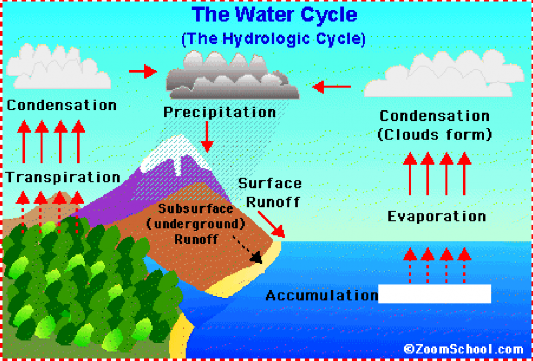3. The Water Cycle
There is a constant and continuous circulation of water from the Earth’s surface to the atmosphere and back to the Earth’s surface. This circulation of water is called the water cycle or the hydrological cycle. The water cycle has no beginning or end, rather it is an intricate combination of evaporation, transpiration, air mass movement, condensation, precipitation, run-off and groundwater movement.
The Sun's heat provides energy to evaporate water from the Earth's surface (oceans, lakes, etc.). Plants also lose water to the air (this is called transpiration). The water vapor eventually condenses, forming tiny droplets in clouds. When the clouds meet cool air over land, precipitation (rain, sleet, or snow) is triggered, and water returns to the land (or sea). Some of the precipitation soaks into the ground. Some of the underground water is trapped between rock or clay layers; this is called groundwater. But most of the water flows downhill as runoff (above ground or underground), eventually returning to the seas as slightly salty water.

